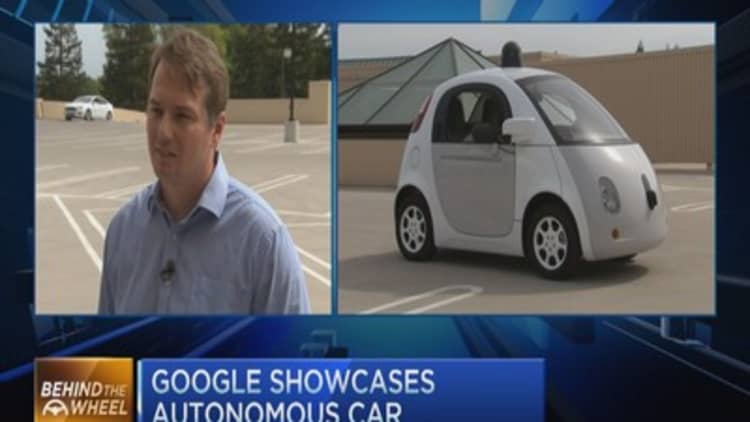After more than a year of collecting data on every mile driven by its fleet of autonomous-drive test cars, Google is giving the industry a better understanding of how often those cars disengaged or reverted to manual driving mode because of a potential safety hazard.
In a report prepared for the California Department of Motor Vehicles, Google said there have been 272 situations where the Google car disengaged from autonomous-drive mode and immediately turned over control of the car to the employee in the driver's seat. On average, Google said the driver took control of the car in 0.83 seconds.
In outlining incidents that occurred between September 2014 and November 2015, Chris Urmson, director of Google Self-Driving Cars said, "Software detected an anomaly somewhere in the system that could have had possible safety implications; in these cases it immediately handed control of the vehicle to our test driver."
Using the technology company's calculation, Google's report also outlined how many disengagements might have resulted in some type of safety incident if the car had continued on its path.
The company said there were 69 cases in which "safe operation of the vehicle required disengagement by the driver." There's no way of knowing how many of those incidents might have ended in a serious collision where someone could have been hurt or killed.
However, Google said its simulators, which also looked at the location and movement of other vehicles and pedestrians, calculated 13 times where test drivers who took control "prevented our vehicle from making contact with another object."
In its report, the company said the number disengagements has dropped over time. In late 2014, the company said the autonomous-drive systems disengaged every 785 miles. By the end of 2015, that number fell to every 5,300 miles.
Since Google put its first autonomous drive vehicle out on the road in 2009, the company's 53 test cars have logged more than 1.3 million miles in California and Texas.

Over that time, Google cars have been involved in 17 minor accidents with other vehicles, none of which were caused by the Google car. Many of the reported collisions involved another car bumping into the back of the Google car at a low speed while approaching an intersection.
Speaking with reporters at the Automotive News World Congress in Detroit, John Krafcik, CEO of Google's Self-Driving Car Project, talked about autonomous-drive vehicles quickly moving to becoming a reality.
"It's not science fiction, it's here," he said.
Questions? Comments? BehindTheWheel@cnbc.com.





